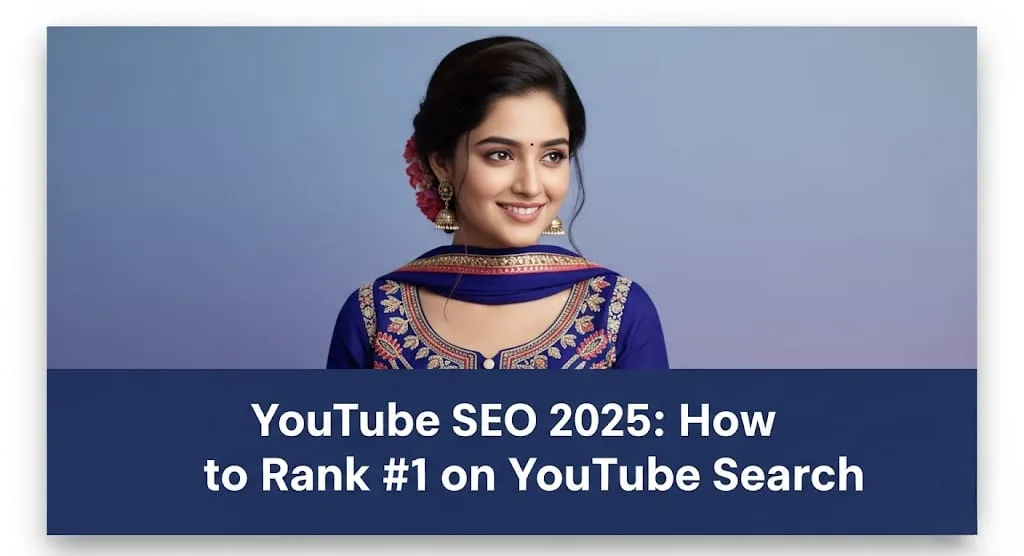In the ever-evolving digital landscape, YouTube continues to reign supreme as the king of video content. For creators and businesses alike, ranking high on Youtube results is no longer a luxury but a necessity. As we move further into 2025, the strategies for achieving that coveted #1 spot are becoming more refined and data-driven. This article will delve into the essential YouTube SEO tactics you need to implement to boost your visibility and dominate the platform.
Understanding the Evolving YouTube Algorithm 🤖
YouTube’s algorithm in 2025 is more sophisticated than ever, prioritizing viewer satisfaction and extended viewing time. It’s not just about keywords anymore; it’s about how users interact with your content. The algorithm aims to serve up videos that keep people engaged, clicking, and returning for more. Key shifts include a greater emphasis on audience retention, click-through rates (CTR), and the growing prominence of short-form content like YouTube Shorts. To succeed, your content must resonate deeply with your target audience and encourage continuous engagement.
The Foundation: Impeccable Keyword Research 🎯
Just like traditional SEO, keyword research forms the bedrock of your YouTube strategy. However, YouTube keyword research has its nuances.
Identifying High-Impact Keywords:
- YouTube Autocomplete: Start by typing broad topics into the Youtube bar and observe the auto-suggestions. These are actual queries people are searching for.
- “Research” Tab in YouTube Studio: This built-in tool is a goldmine. It reveals popular search queries your audience uses and, crucially, highlights content gaps – topics with search volume but lacking quality videos. This is your chance to fill a void!
- Dedicated YouTube Keyword Tools: Tools like VidIQ and TubeBuddy offer deep insights into search volume, competition, and related keywords. They can help you uncover long-tail keywords – more specific phrases that, while having lower search volume, are often less competitive and easier to rank for.
- Competitor Analysis: Analyze the top-performing videos in your niche. What keywords are they targeting in their titles, descriptions, and tags? This can reveal hidden opportunities and effective strategies.
- Google Trends (with YouTube filter): Stay ahead of the curve by identifying trending topics that are gaining momentum on YouTube. Creating timely content can significantly boost your views.
Remember to target a primary keyword for each video, and sprinkle relevant secondary and long-tail keywords naturally throughout your metadata.
On-Page Optimization: Crafting Your Video’s Persona 🎬
Once you have your keywords, it’s time to apply them strategically to your video’s on-page elements. This tells YouTube exactly what your video is about.
- Video Titles: Your title is the first impression.
- Include your primary keyword as close to the beginning as possible.
- Keep it concise (under 60 characters) to avoid truncation in search results.
- Make it compelling and curiosity-inducing, but avoid clickbait. YouTube’s algorithm can detect misleading titles and penalize your video.
- Video Descriptions: This is your opportunity to provide context and further optimize for search.
- Include your primary keyword in the first few lines, as this is what typically appears in search previews.
- Naturally integrate 2-3 instances of your primary keyword and 1-2 instances of your secondary keywords.
- Provide a detailed summary of your video’s content, including timestamps for easy navigation.
- Add relevant links to your website, social media, or other related videos.
- Aim for at least 200-300 words for comprehensive optimization.
- Tags: While their importance has slightly diminished, tags still help YouTube understand your content.
- Use 8-12 relevant tags.
- Start with your exact target keyword as the first tag.
- Include variations, synonyms, and broader topics related to your video.
- Avoid irrelevant tags, as they can hurt your ranking.
- Thumbnails: Often overlooked, a captivating custom thumbnail is crucial for boosting your Click-Through Rate (CTR).
- Use bold, readable fonts and contrasting colors.
- Feature a human face with emotion, if relevant, as this tends to be highly noticeable.
- Maintain a consistent style across your channel for brand recognition.
- Consider adding a short, impactful text overlay that complements your title.
- Closed Captions and Transcripts: These are essential for accessibility and SEO.
- They help YouTube understand your video’s content, especially if your audio isn’t perfectly clear.
- They expand your reach to a wider audience, including those with hearing impairments or those who watch videos on mute.
Beyond the Basics: Engagement and Audience Retention ✨
The YouTube algorithm in 2025 heavily emphasizes how viewers interact with your content.
- Watch Time and Audience Retention: These are paramount. YouTube wants to promote videos that keep people watching.
- Hook viewers in the first 10-15 seconds with a compelling intro or a sneak peek of what’s to come.
- Structure your content clearly with logical transitions and video chapters.
- Remove any unnecessary “fluff” or dead air. Every second should add value.
- For longer videos (8-12 minutes often perform well), ensure the content remains engaging throughout.
- Engagement Metrics: Likes, comments, shares, and new subscribers all signal to YouTube that your content is valuable.
- Include clear Calls to Action (CTAs) within your video, encouraging viewers to like, comment, subscribe, and share.
- Actively respond to comments to foster a community and encourage further interaction.
- Utilize YouTube’s interactive elements like Cards and End Screens to guide viewers to related content, playlists, or your website, increasing overall channel watch time.
- Playlists: Organize your videos into themed playlists to create a binge-worthy experience. This encourages viewers to watch multiple videos, significantly boosting your channel’s overall watch time.
Channel-Level Optimization and Promotion 📈
Your individual video optimization needs to be supported by a strong channel presence and strategic promotion.
- Channel Branding: A professional and cohesive channel layout, banner, and profile picture instill trust and encourage subscriptions.
- “About” Section: Optimize your channel’s “About” section with relevant keywords and a clear description of your content.
- Consistency: Develop a realistic publishing schedule and stick to it. Regular uploads signal to YouTube that your channel is active and provides fresh content.
- Promotion: Don’t just upload and hope for the best.
- Share your videos on your other social media platforms.
- Embed your YouTube videos on your website or blog posts.
- Consider collaborating with other creators in your niche to tap into new audiences.
Monitoring and Adapting with YouTube Analytics 📊
Success in YouTube SEO is an ongoing process. YouTube Analytics is your best friend for understanding what’s working and what’s not.
- Key Metrics to Monitor: Pay close attention to Watch Time, Audience Retention, Click-Through Rate, and Traffic Sources.
- Identify Drop-Off Points: If viewers consistently leave at a certain point in your videos, analyze why and adjust your content strategy accordingly.
- Content Performance: Identify your top-performing videos and analyze the elements that contributed to their success (titles, thumbnails, topics, length, etc.). Replicate these successful patterns.
- Competitor Performance: Use the “Compare to” feature in Analytics to benchmark your performance against similar channels and identify areas for improvement.
By diligently tracking these metrics and adapting your strategy, you’ll be well on your way to ranking #1 on Youtube in 2025.
FAQs:
Q1: How frequently should I upload videos to rank higher on YouTube in 2025?
A1: Consistency is key. While there’s no magic number, maintaining a realistic publishing schedule (e.g., once a week, twice a month) that you can consistently adhere to is more important than aiming for daily uploads and burning out. The YouTube algorithm favors channels that provide a steady stream of content to their audience.
Q2: Are YouTube Shorts really that important for SEO in 2025?
A2: Absolutely! YouTube Shorts are a massive growth area, and the algorithm is increasingly prioritizing short-form content. They are excellent for discoverability and can drive new viewers to your longer-form videos. Integrating Shorts into your content strategy in 2025 is highly recommended.
Q3: Besides watch time, what’s the single most important factor for ranking on YouTube?
A3: While watch time and audience retention are incredibly crucial, the Click-Through Rate (CTR) of your thumbnail and title is arguably the most vital initial factor. If viewers aren’t clicking on your video in the first place, all your other optimization efforts won’t matter. A compelling thumbnail and title are essential for getting that initial click and signaling to YouTube that your video is relevant and appealing.



